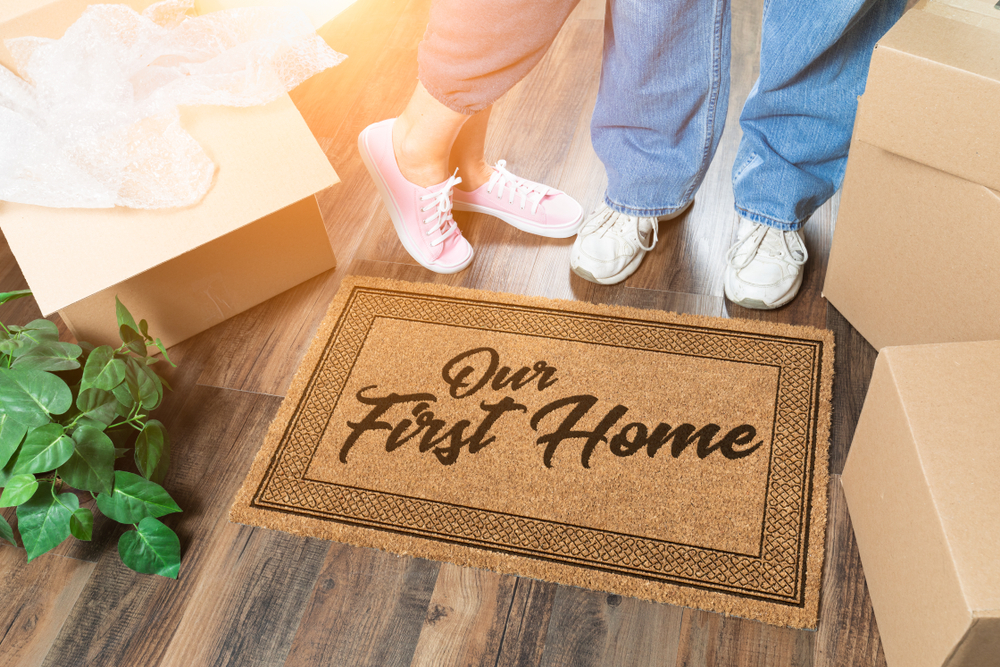Essential First-Time Home Buyer Programs Explained
Stepping into the world of homeownership for the first time can be a bit daunting.
There’s a lot to consider, from finding the perfect house to securing a mortgage.
But did you know there are programs specifically designed to help first-time home buyers?
These programs offer financial assistance, making the dream of owning a home more attainable.
In this guide, we’ll break down the essential first-time home buyer programs. We’ll explain what they are, how they work, and how you can take advantage of them.

Whether you’re just starting your home buying journey or you’re deep in the trenches, this guide is for you. Let’s dive in and demystify the process of buying your first home.
What is a First-Time Home Buyer Program?
First-time home buyer programs are initiatives designed to help people buy their first homes.
These programs are typically offered by federal, state, and local governments, as well as some private organizations.
The goal of these programs is to make homeownership more accessible. They do this by offering financial assistance, such as grants, low-interest loans, and down payment assistance.
But who qualifies as a first-time home buyer?
Well, it’s not always as straightforward as it sounds.
Here’s a quick rundown of who might be considered a first-time home buyer:
- You’ve never owned a home before.
- You haven’t owned a home in the last three years.
- You’re a single parent who only owned a home with a former spouse.
- You’re a displaced homemaker who only owned with a spouse.
- You owned a home that wasn’t in compliance with building codes and can’t be brought into compliance for less than the cost of constructing a new home.
So, as you can see, even if you’ve owned a home before, you might still qualify as a first-time home buyer under these programs.
Key Benefits of First-Time Home Buyer Programs
First-time home buyer programs offer a range of benefits.
The most obvious one is financial assistance. This can come in the form of grants, low-interest loans, and down payment assistance.
But the benefits don’t stop there.
Here are some other key benefits of these programs:
- Education: Many programs offer free home buyer education courses. These can help you understand the home buying process and make informed decisions.
- Lower interest rates: Some programs offer loans with lower interest rates than standard mortgages. This can save you a lot of money over the life of your loan.
- Flexible credit requirements: Some programs have more flexible credit requirements than traditional lenders. This can make it easier for you to qualify for a loan.
- Closing cost assistance: Some programs offer assistance with closing costs, which can be a significant expense when buying a home.
So, as you can see, these programs can offer a lot more than just financial assistance. They can also provide valuable resources and support to help you navigate the home buying process.
Types of First-Time Home Buyer Programs
There are many types of first-time home buyer programs.
These programs can be broadly categorized into three types: federal loan programs, state-specific assistance, and grants or other financial aid.
Let’s take a closer look at each of these categories.
Federal Loan Programs
Federal loan programs are backed by the federal government.
These programs often have more lenient credit and income requirements than traditional loans.
One popular federal loan program is the Federal Housing Administration (FHA) loan program. FHA loans require a lower down payment than conventional loans.
Another federal loan program is the USDA loan program. This program is designed for rural home buyers and requires no down payment.
There’s also the VA loan program, which is available to veterans and service members. Like USDA loans, VA loans require no down payment.
State-Specific Assistance
Many states offer their own first-time home buyer programs.
These programs often provide financial assistance in the form of low-interest loans, grants, and tax credits.
Some state programs also offer down payment and closing cost assistance.
The specifics of these programs vary by state, so it’s important to research the programs available in your area.
Keep in mind that state-specific programs can often be combined with federal loan programs for additional benefits.
Grants and Other Financial Aid
Grants are a type of financial aid that does not need to be repaid.
Many first-time home buyer programs offer grants for down payment and closing cost assistance.
There are also programs that offer mortgage credit certificates. These certificates provide a tax credit for a portion of your mortgage interest.
Some programs also offer financial aid for home repairs and improvements.
Remember, the specifics of these programs can vary, so it’s important to do your research.
How to Qualify for First-Time Home Buyer Programs
Qualifying for first-time home buyer programs can seem daunting.
But don’t worry, we’re here to help.
First, it’s important to understand that each program has its own set of requirements.
These requirements can include things like your credit score, income, and the price of the home you’re buying.
Some programs also require you to complete a home buyer education course.
Here are some general steps to qualify for these programs:
- Check your credit score.
- Determine your budget.
- Research programs in your area.
- Complete any required education courses.
- Apply for the program.
Credit Score Considerations
Your credit score plays a big role in qualifying for first-time home buyer programs.
A higher credit score can increase your chances of approval.
It can also help you secure a lower interest rate.
Keep in mind, some programs have minimum credit score requirements.
So, it’s important to know your score and work on improving it if necessary.
Income and Purchase Price Limits
Income and purchase price limits are also important considerations.
Many programs have income limits to ensure they’re helping those who need it most.
These limits can vary by program and location.
Similarly, some programs have purchase price limits.
This means the home you’re buying must be below a certain price to qualify.
Applying for Home Buyer Programs: A Step-by-Step Guide
Applying for first-time home buyer programs doesn’t have to be a headache.
Here’s a simple step-by-step guide to help you navigate the process:
- Research: Start by researching the different programs available in your area.
- Check Eligibility: Once you’ve found a program you’re interested in, check to see if you meet the eligibility requirements.
- Gather Documents: You’ll likely need to provide documents like pay stubs, tax returns, and bank statements.
- Apply: Submit your application along with the necessary documents.
- Wait: After you’ve applied, you’ll need to wait for approval.
- Follow Up: If you haven’t heard back within the expected time frame, don’t hesitate to follow up.
- Close: Once approved, you can move forward with closing on your new home.
Remember, each program may have its own specific application process.
So, it’s important to read all the instructions carefully.
And don’t be afraid to ask questions if you’re unsure about anything.
Tips for Maximizing Your Benefits
Getting the most out of first-time home buyer programs requires a bit of strategy.
Here are some tips to help you maximize your benefits:
- Combine Programs: Some programs can be combined for greater benefits.
- Improve Your Credit Score: A higher credit score can help you qualify for better terms.
- Shop Around: Don’t settle for the first program you find.
- Negotiate: You might be able to negotiate better terms with the seller.
- Stay Informed: Keep up with changes in programs and new opportunities.
Remember, every bit of savings counts when buying a home.
So, take the time to explore all your options.
And don’t be afraid to ask for help if you need it.
After all, these programs are designed to assist you.
Common Misconceptions About Home Buyer Programs
There are a few myths about first-time home buyer programs that can lead to confusion.
One common misconception is that these programs are only for low-income buyers.
In reality, many programs are available to buyers with a range of income levels.
Another myth is that using a program means you’ll get a home for free.
While these programs can provide significant assistance, they don’t eliminate all costs.
Understanding the facts can help you make the most of these programs.
Real Stories: Success with First-Time Home Buyer Programs
Let’s look at some real-life success stories.
Take Sarah, a single mom from Texas. She used a state-specific program to buy her first home.
Then there’s John, a veteran from Florida. He used a VA loan to purchase his dream home with no down payment.
Or consider Lisa and Tom, a young couple from California. They combined a federal loan with a local grant to afford their first home.
These stories show that with the right resources, buying your first home can be a reality.
Final Thoughts and Next Steps
So, you’re ready to take the plunge. That’s great!
Remember, the journey to homeownership is a marathon, not a sprint. Take your time to understand the programs available to you.
With the right plan and resources, your dream home is within reach. Good luck! Contact us today.


